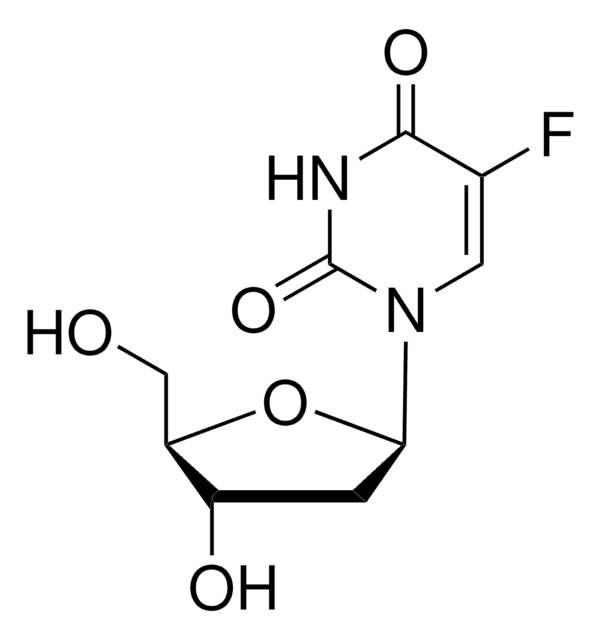Kluczowe dokumenty
F3542
Fibronectin Fragment III1-C human
recombinant, expressed in E. coli, lyophilized powder
Synonim(y):
FF III1-C
About This Item
Polecane produkty
pochodzenie biologiczne
human
Poziom jakości
rekombinowane
expressed in E. coli
Formularz
lyophilized powder
jakość
essentially salt free
masa cząsteczkowa
8-15 kDa
opakowanie
pkg of 0.5 mg
metody
cell culture | mammalian: suitable
pokrycie powierzchni
0.45 μg/cm2
rozpuszczalność
Tris-buffered saline: soluble 1.00-1.10 mg/mL, clear, colorless
numer dostępu UniProt
Warunki transportu
ambient
temp. przechowywania
−20°C
informacje o genach
human ... FN1(2335)
Opis ogólny
Recently a new region, type III1 repeat cloned from human placenta cDNA, was reported to participate in matrix formation. In an experiment employing antibodies for the analysisof fibronectin domains required for matrix assembly, the epitope that inhibited binding and insolubilization of labeled plasma fibronectin by fibroblasts, was identified on the type III1 and type I modules of fibronectin. This suggested a role for type III1 and type I in the mediation of fibronectin assembly. This finding was further supported by the ability of the 14 kDa fragment from the first two type III repeats of fibronectin to inhibit fibronectin matrix assembly.4 Recently recombinant fragment III1-C, modeled after the C-terminal two-thirds of the III1 repeat, was found to bind to fibronectin and induce spontaneous disulfide crosslinking of the fibronectin molecules into multimers, which resemble matrix fibrils
Zastosowanie
Działania biochem./fizjol.
Opakowanie
Kod klasy składowania
11 - Combustible Solids
Klasa zagrożenia wodnego (WGK)
WGK 3
Temperatura zapłonu (°F)
Not applicable
Temperatura zapłonu (°C)
Not applicable
Środki ochrony indywidualnej
Eyeshields, Gloves, type N95 (US)
Wybierz jedną z najnowszych wersji:
Masz już ten produkt?
Dokumenty związane z niedawno zakupionymi produktami zostały zamieszczone w Bibliotece dokumentów.
Klienci oglądali również te produkty
Produkty
Fibronectin (FN) is a multifunctional, extracellular plasma glycoprotein produced by hepatocytes that circulates at near micromolar concentration and assembles into extracellular matrix fibrils at cell surfaces along with locally produced cellular FN.
Fibronektyna (FN) odgrywa kluczową rolę w tworzeniu fibryli macierzy zewnątrzkomórkowej i interakcjach komórkowych.
Cancer stem cell media, spheroid plates and cancer stem cell markers to culture and characterize CSC populations.
Extracellular matrix proteins such as laminin, collagen, and fibronectin can be used as cell attachment substrates in cell culture.
Protokoły
Dilute fibronectin to the desired concentration. Optimum conditions for attachment are dependent on cell type and application. The typical coating concentration is 1 – 5 ug/cm2.Fibronectin coating protocol, products, and FAQs at sigmaaldrich.com
Rozcieńczona fibronektyna do mocowania komórek, w zależności od typu komórek. Protokół powlekania, produkty i często zadawane pytania.
Dilute fibronectin to the desired concentration. Optimum conditions for attachment are dependent on cell type and application. The typical coating concentration is 1 – 5 ug/cm2.Fibronectin coating protocol, products, and FAQs.
Nasz zespół naukowców ma doświadczenie we wszystkich obszarach badań, w tym w naukach przyrodniczych, materiałoznawstwie, syntezie chemicznej, chromatografii, analityce i wielu innych dziedzinach.
Skontaktuj się z zespołem ds. pomocy technicznej




